The Saptamatrikas are a powerful group of seven divine mothers revered in Hinduism for their extraordinary strength, protective nature, and deep connection to the cosmic feminine force. Emerging as incarnations of Goddess Shakti, these celestial mothers, Brahmani, Vaishnavi, Maheshwari, Indrani, Kaumari, Varahi, and Chamunda, embody the essence of love, beauty, motherhood, fertility, and creativity. Each Matrika is associated with a major male deity, reflecting their shared attributes, weapons, and vahanas, and together they form a formidable force that aids in the destruction of evil and the protection of devotees. The Saptamatrikas are celebrated for their dual roles: as nurturing guardians who shield children and as fierce warriors who vanquish demons. Their presence in ancient scriptures and temple art highlights their enduring significance, while their worship continues to inspire faith, courage, and spiritual evolution among devotees across India.
Who are the Saptamatrikas?
The Saptamatrikas are a revered group of seven mother goddesses in Hindu tradition, each representing a unique aspect of the divine feminine power, Shakti. The term ‘Matrikas’ means mothers, and ‘Sapta’ denotes seven, collectively referring to the Seven Mothers. These goddesses, Brahmani, Vaishnavi, Maheshwari, Indrani, Kaumari, Varahi, Chamunda, and sometimes Narasimhi, are manifestations of Shakti, emerging to assist in the destruction of powerful demons, most notably the Andhakas, as described in Hindu mythology. Their origin is closely tied to the myth where each drop of blood from the demon Andhaka gave rise to more demons, prompting the creation of the Matrikas to annihilate them and restore cosmic balance.
The attributes and iconography of the Saptamatrikas can vary by region and scripture. In some traditions, their number extends to eight or more, forming the Ashtamatrikas or even larger groups, especially in Nepal where the Ashtamatrika are more commonly worshipped. Each Matrika is associated with a major male deity, Brahmani with Brahma, Vaishnavi with Vishnu, Maheshwari with Shiva, Indrani with Indra, Kaumari with Kartikeya, Varahi with Varaha, and Chamunda with Devi herself, reflecting their shared powers, weapons, and vahanas.
In folk narratives, the Matrikas appear in both benevolent and malevolent forms. As protectors, they safeguard fetuses and young children, embodying nurturing and maternal qualities. When not appeased, they are linked to the spread of diseases, reflecting their fierce and unpredictable nature. However, tradition holds that sincere worship ensures their compassion and protection. The Saptamatrikas are also connected to the 64 Yoginis, a wider circle of demi-goddesses who serve and surround the principal Devis.
Worship of the Saptamatrikas is particularly prominent in South India, where they are honored in temples and rituals for their protective and purifying powers. Their enduring presence in Hindu iconography and scripture underscores their role as both guardians and fierce warriors, central to the cosmic struggle between good and evil.
Origins in Hindu Scriptures
The origins of the Saptamatrikas are deeply embedded in Hindu scriptures and span a rich historical and mythological landscape. References to these seven mother goddesses appear in foundational texts such as the Rigveda, Markandeya Purana, Matsya Purana, Gobhilasmriti, and Devi Purana. Their worship dates back to at least the 3rd millennium BCE, as indicated by archaeological findings from the Indus Valley Civilization. The earliest known epigraphic mention is in the Gangadhara inscription of Vishwa Varman, with further references in the Visharstambha inscription of Skandagupta, underscoring their antiquity and widespread reverence.
Scriptural accounts present varied narratives about their origin. The Markandeya Purana and Matsya Purana describe the Saptamatrikas as divine energies created to assist in the destruction of formidable demons like Andhaka and Raktabeeja. In these legends, each Matrika emerges from the shakti of a major male deity—Brahmani from Brahma, Maheshwari from Shiva, Vaishnavi from Vishnu, Kaumari from Skanda, Varahi from Varaha, Indrani from Indra, and Chamunda from Devi herself. They are depicted wielding the same weapons, adorned with similar ornaments, and riding the same vahanas as their corresponding gods, symbolizing their shared power and divine purpose.
The Varaha Purana expands the group to include Yogeshwari, forming the Ashtamatrikas, and uniquely assigns each goddess to a negative mental quality: Yogeshwari represents desire, Vaishnavi covetousness, Maheshwari wrath, Kumari illusion, Chamunda tale-bearing, Varahi envy, Brahmani pride, and Indrani fault-finding. This allegorical interpretation frames the Saptamatrikas as embodiments of both cosmic forces and human psychology, suggesting that their worship is not only a spiritual practice but also a means to overcome inner vices.
Iconographic evidence from temple art and sculpture, such as those cited in the Krityaratnakara and seen in South Indian temples from the Chola and Pallava periods, consistently portrays the Saptamatrikas as majestic yet approachable figures, often seated in lalitasana and richly adorned. Their maternal aspect is highlighted by the presence of infants, while their martial attributes reinforce their role as protectors and warriors.
The Saptamatrikas’ enduring presence in scripture, art, and ritual practice illustrates their central role in Hindu cosmology as both fierce defenders against chaos and compassionate guardians of creation. Their worship continues to be a vital tradition, especially in South India, reflecting their lasting spiritual and cultural significance.
Hindu Iconography of the Saptamatrikas
Saptamatrikas are central figures in Hindu iconography, embodying both maternal grace and divine power. They are often depicted with infants, symbolizing nurturing and protective qualities, while their aristocratic elegance is reflected in their elaborate jewelry, circular earrings, and richly adorned attire. The goddesses are typically shown seated in the lalitasana pose, which conveys both relaxation and readiness for action.
Brahmani is portrayed with a yellow complexion, four heads—three visible—and four or six arms. She holds a kamandalu and akshamala, with her other hands in varada and abhaya mudras. Her vahana is the hamsa, and she sits on a lotus, signifying purity and wisdom. She is crowned with a Karanda Mukuta and resides under a Palash tree.
Vaishnavi appears dark in complexion, holding the chakra and sankha. She is adorned with the Kirita Mukuta and all the jewels of Vishnu, including the vanamala. Her vahana is Garuda, and she is associated with the Raja Vriksha. Her iconography reflects her connection to Bhagwan Vishnu and her role as a guardian.
Indrani is depicted with three eyes and four arms, holding the vajra and shakti, with her other hands in varada and abhaya mudras. She is dressed in red, wears the Kirita Makuta, and her vahana is the elephant. Her abode is beneath the Kalpaka tree, emphasizing her regal and protective nature.
Maheshwari has a white complexion, three eyes, and four hands. She carries the trisula and akshamala, with varada and abhaya mudras. Her vahana is Nandi, the bull, and she is adorned with a Jata Makuta. Her serene yet powerful presence reflects her origin from Shiva.
Kaumari is shown with a yellow complexion and four hands, holding the sakti and kukkuta, with her remaining hands in abhaya and varada mudras. Her vahana is the peacock, and she is associated with the Fig tree, highlighting her youthful energy and martial prowess.
Varahi stands out with her boar face and human body, dark complexion, and coral ornaments. She wields the hala and sakti, and her vahana is the elephant. She wears a Karanda Makuta and resides under a Kalpaka tree, representing strength and fierce protection.
Chamunda is depicted as emaciated, with a sunken belly and a ferocious expression. She has four hands, holding the kapala and trisula, with varada and abhaya mudras. She wears a garland of skulls, tiger skin, and a heavy Jata Makuta. Her vahana is the owl, and her banner features an eagle, symbolizing her fearsome aspect and association with destruction of evil.
These detailed iconographic elements not only distinguish each Matrika but also communicate their unique powers, divine origins, and the roles they play in the cosmic order.
Legends and Stories about the Saptamatrikas
The Saptamatrikas play a decisive role in some of Hinduism’s most formidable battles against evil, as described in the Markandeya Purana and other ancient texts. In the confrontation with Rakhtabeeja, a demon allied with Shumbh and Nishumbh, the goddess faces a unique challenge: Rakhtabeeja’s boon causes every drop of his spilled blood to create a new, equally powerful clone. As the goddess wages war, the battlefield fills with countless Rakhtabeejas, making victory seem impossible. To counter this, Brahma, Vishnu, Shiva, Indra, Kartikeya, and Yama send forth their own female Shaktis, each equipped with their respective vahanas and weapons, to aid the Devi. These Shaktis manifest as the Saptamatrikas, who assist the goddess in containing the demon’s blood and ultimately enable his defeat.
A parallel narrative appears in the Mahabharata and several Puranas concerning the demon Andhaka, who possesses a similar boon. As Shiva battles Andhaka, the demon multiplies with every drop of blood that touches the earth. To halt this, Shiva creates Yogeshwari from the flames of his mouth, and the Saptamatrikas materialize to support her. Their combined efforts prevent Andhaka’s regeneration and lead to his destruction. Artistic depictions often show Yogeshwari alongside the seven mothers, highlighting their collective power and unity.
The Mahabharata also connects the Saptamatrikas to the birth and upbringing of Skanda, the warrior god and son of Shiva and Parvati. In one account, Indra dispatches the goddesses, referred to as the ‘mothers of the world’, to eliminate Skanda, but their maternal instincts prevail, and they choose to nurture him instead. Another version describes the Matrikas as the spouses of six of the Saptarishis, who, after being suspected of being Skanda’s mothers, are abandoned by their husbands. They appeal to Skanda, who grants them the status of revered Devis and gives them the authority to discipline and protect children under sixteen. This act links the Matrikas to the Vedic Krittikas, further cementing their role as nurturing guardians and powerful protectors in Hindu mythology.
These stories emphasize the Saptamatrikas’ dual nature: fierce warriors in cosmic battles and compassionate mothers who nurture and protect. Their presence in myth underscores their significance in both the spiritual and moral fabric of Hindu tradition.
Spiritual Lessons from the Saptamatrikas
The stories of the Saptamatrikas deliver profound moral and spiritual lessons that resonate across Hindu philosophy and daily life. Central to these stories is the theme of divine feminine power working in harmony with masculine energy to restore cosmic balance and defeat forces of chaos. The Matrikas demonstrate that real strength lies in unity, cooperation, and the ability to channel both nurturing and fierce aspects of the self as circumstances demand. Their intervention in battles against demons like Raktabeeja and Andhaka symbolizes the power of collective action and the importance of confronting and neutralizing negative forces, both external and internal.
Spiritually, the Saptamatrikas represent the journey of the soul through different stages of consciousness. Each goddess is linked to specific qualities and chakras, guiding the aspirant from the initial awakening to the highest realization. Their stories remind devotees to recognize and overcome inner vices such as desire, anger, pride, and illusion. The Matrikas embody the principle that facing and transforming these negative tendencies is essential for spiritual growth and liberation.
These legends also highlight the importance of dharma, or righteous conduct, and the victory of truth and balance over adharma, or chaos and ignorance. The Matrikas’ role as protectors and disciplinarians for children underlines the value of guidance, discipline, and maternal care in shaping character and ensuring well-being. Their worship encourages devotees to seek inner strength, resilience, and courage in overcoming life’s obstacles, while also nurturing compassion, wisdom, and self-awareness.
Ultimately, the Saptamatrikas teach that the divine feminine is not only a source of creation and protection but also a force for transformation and self-realization, urging every individual to strive for balance, clarity, and spiritual fulfillment.
The Energetic Symbolism of the Saptamatrikas
The Saptamatrikas symbolize the aspirant’s spiritual ascent through the chakra system, mapping the journey from spiritual initiation to ultimate liberation. The infant on Brahmani’s lap represents the seeker at the beginning of their path, embodying innocence and the awakening of spiritual curiosity. Brahmani corresponds to the lowest chakra, Muladhara, which marks the foundation of spiritual practice and the initial awakening of dormant energy.
As the aspirant progresses, Maheshwari, Kaumari, Vaishnavi, Varahi, and Indrani each align with the five middle chakras, representing the essential stages of growth and transformation. These goddesses symbolize the sequential rungs of the spiritual ladder, guiding the seeker through self-discovery, emotional balance, willpower, love, and communication. Each Matrika challenges and refines the aspirant’s character, helping to overcome inner obstacles and cultivate higher virtues.
The journey culminates with Kali or Chamunda, who signifies the uppermost chakra, Sahasrara. This stage represents the dissolution of ego and the realization of unity with the divine. Chamunda’s fierce energy is both a test and a catalyst, urging the aspirant to transcend all limitations and embrace spiritual freedom. The passage through each Matrika reflects the interconnectedness of the chakras, where progress in one center influences the entire system, fostering holistic growth and self-realization.
This symbolic framework highlights the Saptamatrikas as conscious energies that both challenge and support the seeker. Their worship and meditation are integral to advancing through the chakras, balancing the subtle body, and attaining spiritual enlightenment. The Saptamatrikas thus embody the transformative power of the divine feminine, guiding the soul from its first steps on the spiritual path to the highest state of liberation.
Puja Vidhi at Home
Required Materials
- Images or idols of the Saptamatrikas
- Plate for placement
- Gangajal or pure water
- Honey
- Gomutra
- Sandalwood paste
- Kumkum, haldi, abir, gulal
- Gopi chandan
- Rice grains
- Incense sticks
- Diya or oil lamp
- Camphor
- Fresh flowers (as specified in Devi Purana)
- Fruits
- Dry fruits, candy sugar
- Betel nuts, clove, cardamom
- Holy thread
- Soft cloth for cleaning
Step-by-Step Home Puja Guide
- Bathe and wear clean clothes to purify yourself and prepare your mind for worship
- Place the images or idols of the Saptamatrikas on a plate or altar
- In a pot, mix a few drops of Gangajal with fresh water and sprinkle on the idols while chanting their names or mantras
- Offer a small amount of gomutra and honey to the idols, then rinse again with Gangajal
- Gently wipe the idols with a soft cloth and set them in their place on the altar
- Apply tilak to each idol using haldi, kumkum, abir, gulal, sandal paste, gopi chandan, and rice grains
- Light incense sticks and a diya
- Offer a small amount of itra or perfume using cotton
- Present dry fruits, candy sugar, betel nuts, clove, cardamom, and fresh fruits as offerings
- Tie a holy thread around your wrist as a mark of devotion
- Light the oil lamp and prepare for aarti
Chanting and Aarti Process
- Recite the mantras or stotras dedicated to the Saptamatrikas with focus and devotion
- Use a rudraksha japa mala if you wish to repeat the mantras multiple times.
- Perform aarti by waving the lit diya or camphor in a circular motion before the deities while singing the aarti or a devotional hymn
- After aarti, distribute the offered prasad (dry fruits, candy sugar, fruits) to family and friends as blessings.
Saptamatrikas Mantras
Sapta Matrika Moola Mantra (for all Saptamatrikas)
aim hrīm srīm am ām sauḥ brāhmī mātre namah
aim hrīm srīm am ām sauḥ māheśvarī mātre namah
aim hrīm srīm am ām sauḥ kaumārī mātre namah
aim hrīm srīm am ām sauḥ vaiṣṇavī mātre namah
aim hrīm srīm am ām sauḥ vārāhī mātre namah
aim hrīm srīm am ām sauḥ māhendrī mātre namah
aim hrīm srīm am ām sauḥ cāmuṇḍā mātre namah
Meaning: Salutations to Mother Brahmani, Maheshwari, Kaumari, Vaishnavi, Varahi, Mahendri (Indrani), and Chamunda, invoking their divine presence and blessings.
Benefits: Chanting these mantras invokes the collective power of the Saptamatrikas, removes negative energies, protects against evil influences, and brings harmony, courage, and spiritual upliftment. Regular recitation grants protection, especially for children and expectant mothers, and to help overcome obstacles and fears.
Benefits of Worshipping the Saptamatrikas
Spiritually, their worship guides aspirants through the stages of inner growth, symbolized by the journey through the chakras, ultimately leading to emancipation and self-realization. The Saptamatrikas are revered for their power to remove negative influences, protect against evil forces, and purify the mind and soul. Their blessings help devotees overcome inner vices, cultivate discipline, and progress steadily on the path to spiritual freedom.
Mentally, invoking the Saptamatrikas brings clarity, emotional balance, and resilience. Their worship dispels fears, anxieties, and mental disturbances, fostering peace and strength in the face of challenges. The goddesses’ collective energy nurtures confidence, sharpens intuition, and inspires courage, equipping devotees to handle life’s obstacles with wisdom and composure.
Materially, the Saptamatrikas are invoked for fertility, protection of children, good health, and prosperity. Their favor is sought by women desiring motherhood and by families seeking happiness and well-being. The goddesses are also prayed to for relief from diseases, removal of the effects of witchcraft, and the resolution of obstacles in daily life. Their worship during festivals like Navratri attract abundance, fortune, and overall harmony in the household.
Most important benefits, one for each Saptamatrika:
- Brahmani: Blesses with spiritual initiation and removes obstacles at the start of any spiritual journey, ensuring a strong foundation for growth.
- Maheshwari: Grants clarity of mind and helps overcome anger and confusion, fostering inner peace and wisdom.
- Kaumari: Inspires courage and youthful energy, supporting the devotee in overcoming fears and taking bold, righteous action.
- Vaishnavi: Bestows prosperity and protection, removes envy and negativity, and brings harmony and abundance to the family.
- Varahi: Provides powerful protection from negative forces and evil influences, ensuring good health and material security.
- Indrani: Destroys jealousy and obstacles, aids in achieving goals, and brings success and social respect.
- Chamunda: Removes deep-seated fears, purifies the mind, and leads the devotee towards ultimate liberation and spiritual victory.
Temples Dedicated to the Saptamatrikas
Temples and institutions dedicated to the Saptamatrikas are found across India, reflecting their enduring significance in Hindu worship and cultural heritage. These shrines are often situated near rivers or lakes and are sometimes simple clusters of seven vermillion-smeared stones, symbolizing the collective power of the goddesses. The Saptamatrikas are especially revered in Tamil Nadu, where they are known as Kannimargal or Saptakannigal, and their worship is deeply rooted in local traditions. Rituals often involve offerings of flowers, fruits, and mantras, with women playing a central role in the ceremonies. The Devi Purana prescribes specific flowers for each goddess, and the Pithori festival, celebrated on the new moon, is a key occasion for their veneration, with symbolic representations of the 64 yoginis created from rice flour or supari nuts.
Architecturally, Saptamatrika temples range from modest village shrines to elaborate structures with historical and artistic significance. Panels depicting the Saptamatrikas are common in ancient temple complexes, often carved from a single stone and placed in prominent positions. Notably, the Saptamatruka Temple in Jajpur, Odisha, stands out as a major center of worship. This temple, located on the south bank of the Baitarani River, dates back to the 11th century and features idols installed during the Ashwamedha sacrifice of Yajati Keshari. The temple has undergone renovation and preservation by the Archaeological Survey of India. According to legend, the images were once hidden during invasions and later recovered and reinstated by local Brahmins. The temple complex also includes the Budha Ganesha Temple and Dashaswamedha Ghat, and it becomes a focal point for pilgrims during the Chaitra month, especially on Krishna paksha Chaturdasi with Shatabhisha nakshatra, when devotees take a holy dip in the river.
Other significant Saptamatrika sites include the temple at Puri near Markandeshwar Tank, where the goddesses are referred to as the seven sisters and have been installed by the Somavamsi ruler Bhima Keshari. The Vaitala Deula temple in Bhubaneswar, known locally as Boitala Deula, features striking sculptures of the Saptamatrikas, with Chamunda as the presiding deity. In South India, the Saptha Mangai Sthalams are a group of seven temples, each dedicated to one of the Matrikas, located in the region around Thiruchirapalli. These temples are important pilgrimage destinations, especially during Navratri, when the Saptamatrikas are worshipped with great fervor and elaborate rituals.
Major temples dedicated to the Saptamatrikas in India include the Saptamatruka Temple in Jajpur, Odisha, the Markandeshwar Tank site in Puri, the Vaitala Deula in Bhubaneswar, and the Saptha Mangai Sthalams in Tamil Nadu. Each of these sites is distinguished by unique sculptural traditions, historical associations with regional dynasties, and vibrant festival practices. While dedicated temples are rare outside India, panels and images of the Saptamatrikas are found in many ancient temple complexes, especially in the Deccan and South India, highlighting their pan-Indian presence and influence on Hindu temple art and architecture.
Festivals Dedicated to the Saptamatrikas
Festivals dedicated to the Saptamatrikas and Ashtamatrikas are most prominently observed during Durga Navaratri, a nine-night celebration of the divine feminine that unites devotees across India in worship and ritual. During Navaratri, each night is dedicated to a different goddess, and in certain regions, especially Tamil Nadu, Kerala, and parts of North India, the Saptamatrikas and their Dwarapalaka devatas are honored through special pujas, offerings, and recitations of mantras. The collective worship of these goddesses invokes their protection, grant spiritual renewal, and remove negative influences from the household.
The eighth day of Navaratri, known as Durga Ashtami or Maha Ashtami, is particularly significant for the veneration of the Matrikas. In Eastern India, this day coincides with the climax of Durga Puja, when the 64 Yoginis and Matrikas are worshipped alongside the main forms of Durga. Rituals such as Astra Puja (worship of weapons), Sandhi Puja (marking the transition from Ashtami to Navami), and elaborate pushpanjali (flower offerings) are performed, commemorating the goddess Chamunda’s victory over demons Chanda, Munda, and Raktabija. These ceremonies highlight the fierce and protective aspects of the Matrikas, as well as their role in the cosmic battle against evil.
In South India, Saptamatrika Navaratri is observed in ancient temples, with each goddess receiving individual attention through unique offerings, flowers, and rituals prescribed by scriptures like the Devi Purana. The Pithori festival, celebrated on the new moon, is another important occasion for their worship, particularly among women seeking blessings for fertility, protection of children, and family well-being. In Nepal, the Ashta Matrika festival is a vibrant event that includes traditional dances, music, and community rituals, reflecting the Matrikas’ importance as protectors of the land.
The worship of the Saptamatrikas during these festivals is not only a means of seeking personal and spiritual empowerment but also a reaffirmation of their role as guardians of dharma and cosmic order. Their presence in regional folklore, temple art, and classical dance further underscores their enduring influence on Hindu culture and religious practice.
Rudra Centre Related Products & Puja Services
Maa Karu Mariamman Brass Statue
This beautifully crafted brass idol features Maa Karu Mariamman, the revered Goddess of Rain and a symbol of motherly love, sacrifice, and compassion. Seated in the graceful Lalitasana posture and adorned with a sari and jewels, she holds a sword, a bowl of kumkum, a trident, and a damru, with a blaze of divine power radiating from her crown. The serene expression of the goddess makes this statue ideal for your puja room, living space, study, or workplace, inviting auspiciousness and divine blessings into any environment. Height: 3.8 inches, Base: 2.6 x 1.8 inches, Weight: 400 grams.
This sacred service features the recitation of the Mata Vaishno Devi Chalisa 51 times by experienced priests, invoking the blessings of Goddess Vaishno Devi for wish fulfillment, relief from difficulties, health, prosperity, and spiritual growth. The ritual includes Kalash Sthapana, Panchang Sthapana, 64 Yogini and Shodash Matrika Pujan, Navgraha Pujan, Vaishno Devi Stotra and Kavach recitation, mantra japa, homa, aarti, and pushpanjali. Participants receive prasad, energized Rudraksha, tabeez, and a yantra, with the option to join the puja live via video or phone call, making it a comprehensive and personalized spiritual experience.
Varahi Devi Mantra Japa and Yajna Night Puja
A personalized puja and homam dedicated to Goddess Varahi, performed by Vedic priests as per your birth details. The ritual includes mantra chanting, homam, and offerings to invoke Varahi’s fierce protection and blessings for overcoming obstacles, health, and prosperity. You receive prasad, energized Rudraksha, and a video of the ritual.
This powerful ritual is dedicated to Maa Chamunda, the fierce and protective leader of the Saptamatrikas, renowned for her victory over the demons Chanda and Munda. The puja includes 11000 mantra chants, abhishek, homa, and comprehensive Vedic rituals performed by experienced priests. Worshipping Maa Chamunda through this yagna invokes her blessings for protection, success, victory over enemies, removal of negative energies, and spiritual empowerment. The service includes live participation options, prasad, energized Rudraksha, and a Durga yantra delivered to your home, making it a complete and personalized spiritual experience.
Seven Shaktis, One Spirit: The Saptamatrikas and the Triumph of the Divine Feminine
The Saptamatrikas embody the boundless strength, compassion, and transformative power of the divine feminine in Hindu tradition. As fierce protectors and nurturing guardians, they guide devotees through every stage of spiritual evolution, helping to overcome inner darkness and awaken higher consciousness. Their presence in mythology, ritual, and art is a testament to their enduring influence as both destroyers of negativity and bestowers of wisdom, courage, and prosperity. Honoring the Saptamatrikas is not only a celebration of the sacred feminine but also a call to embrace unity, resilience, and the pursuit of spiritual freedom in every aspect of life.

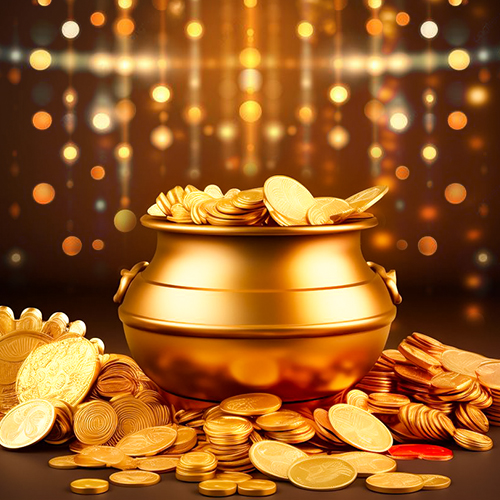
-in-Astrology.jpg)
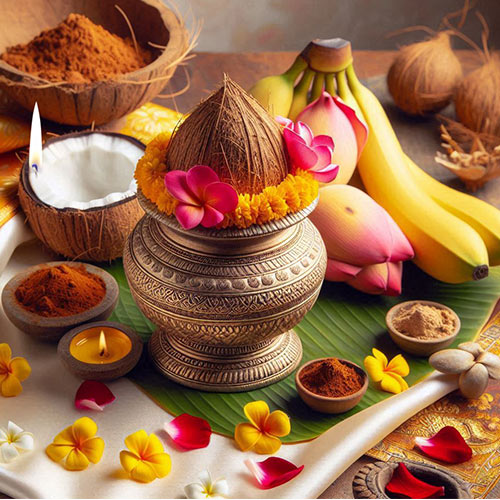
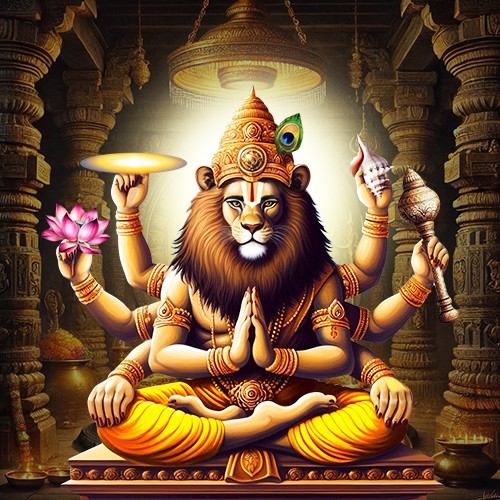
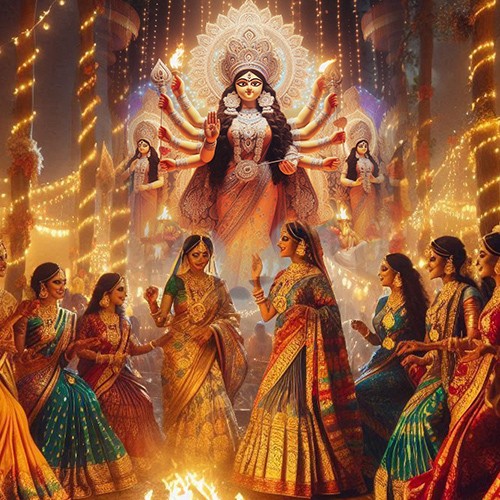
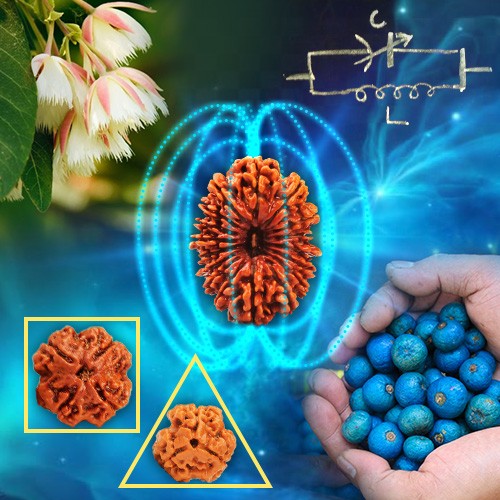

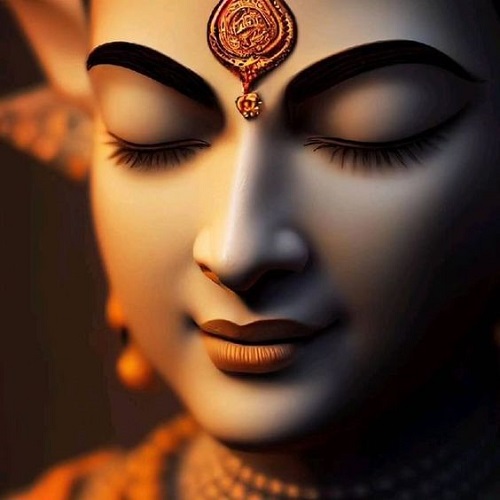
.jpg)
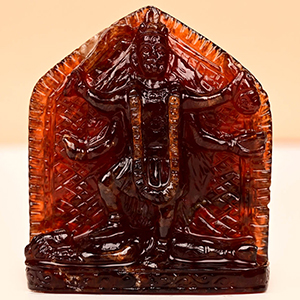
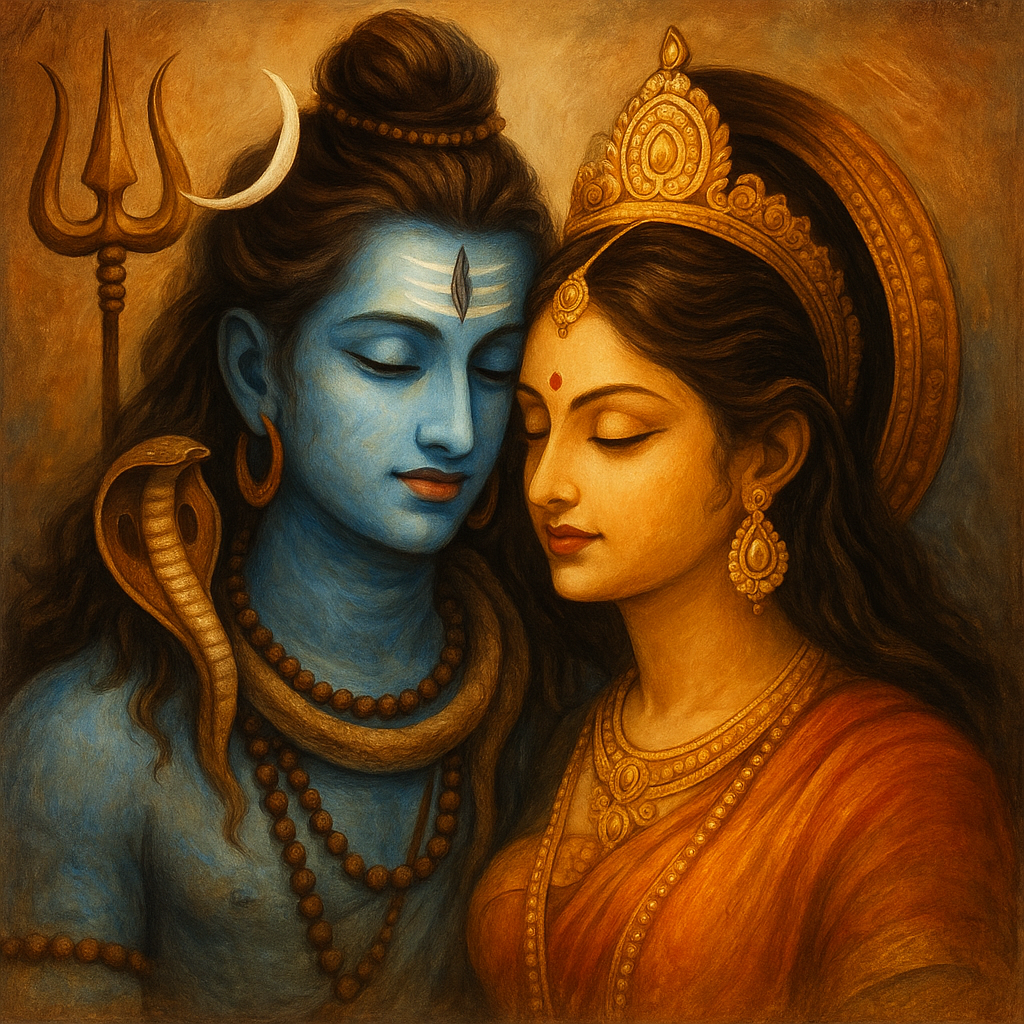
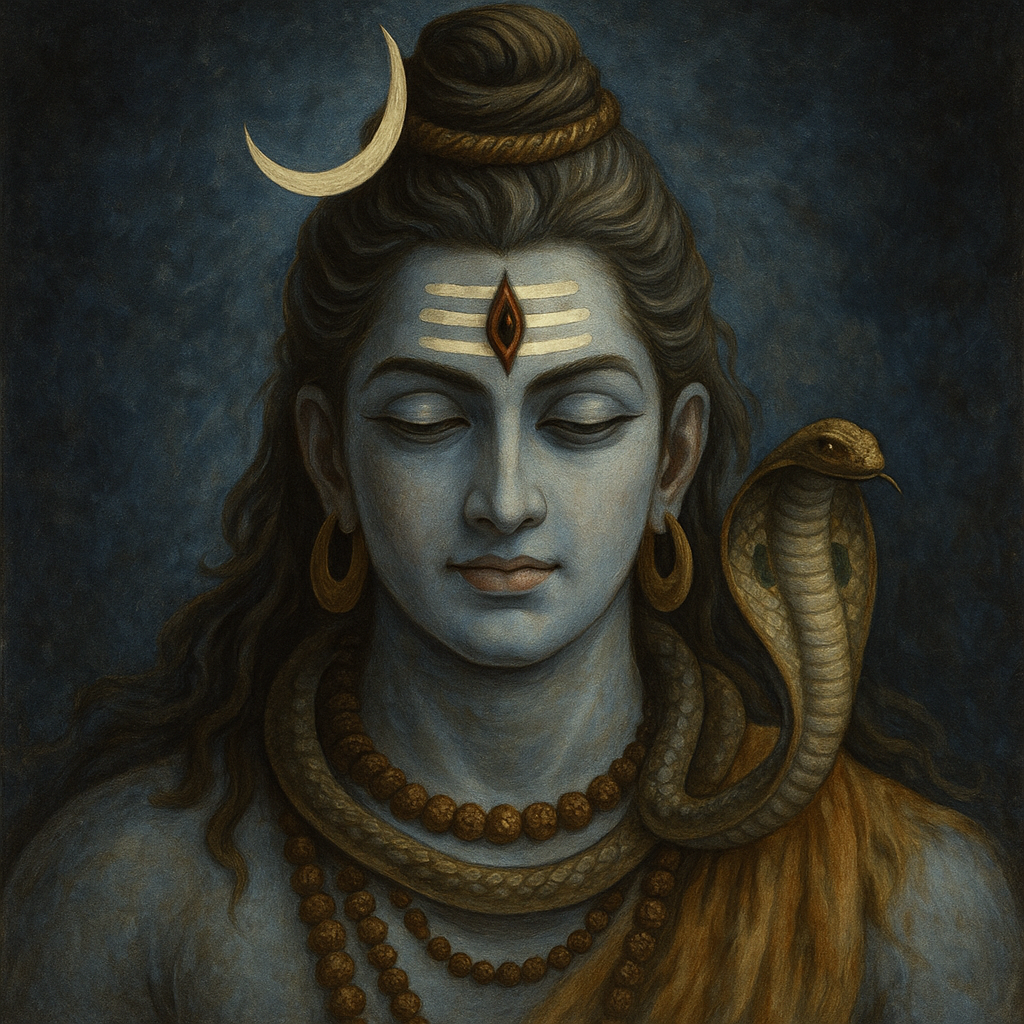
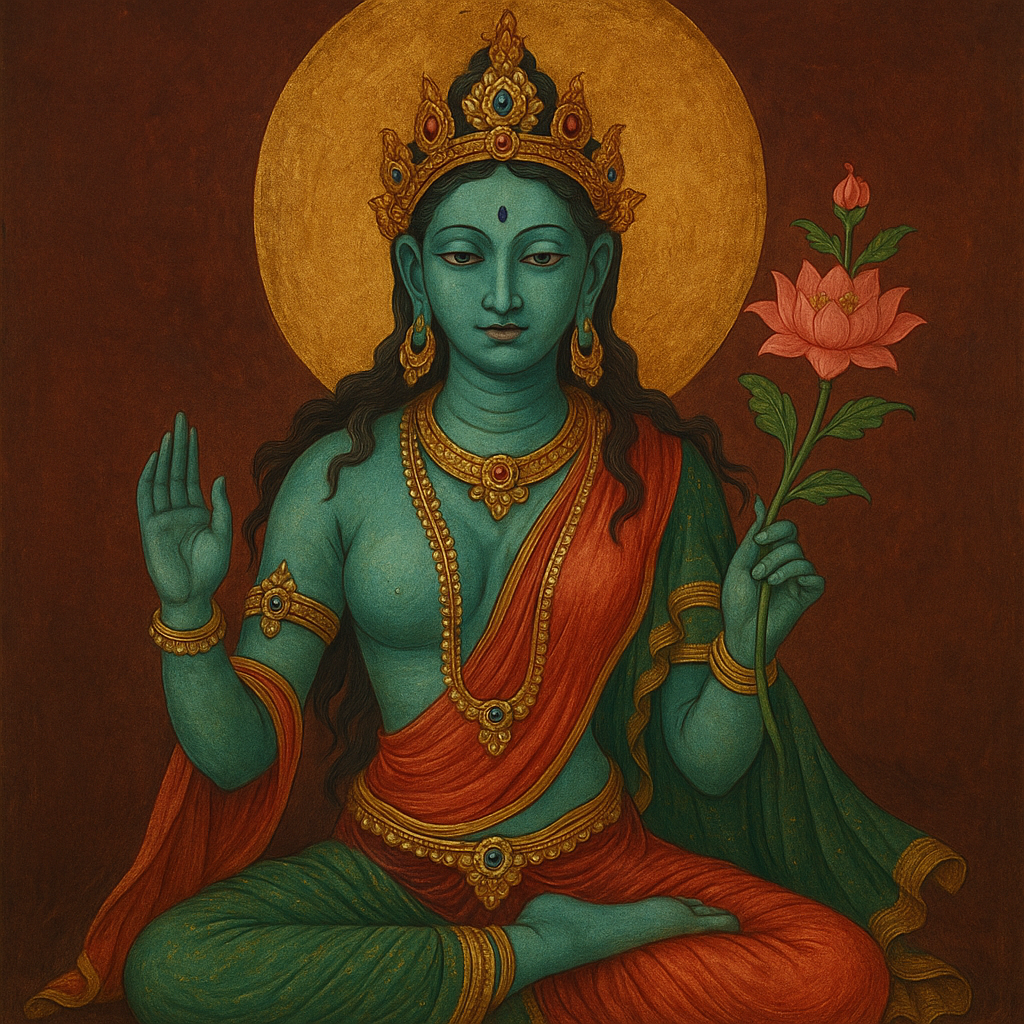
BASAVARAJ N AKKI
|April 2, 2025
Informative article. Some times they are nine in number may be on either side they must be dwarapalakis. for seven mother goddesses